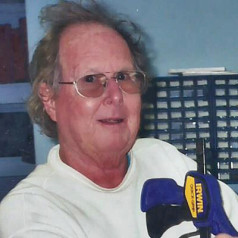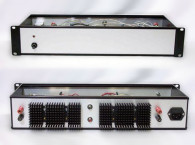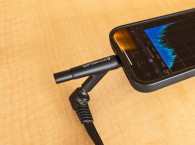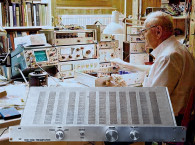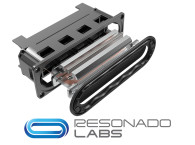
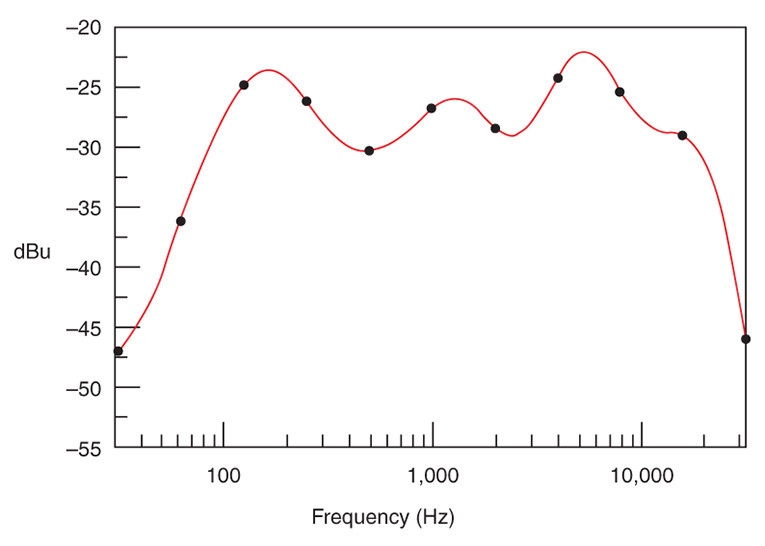
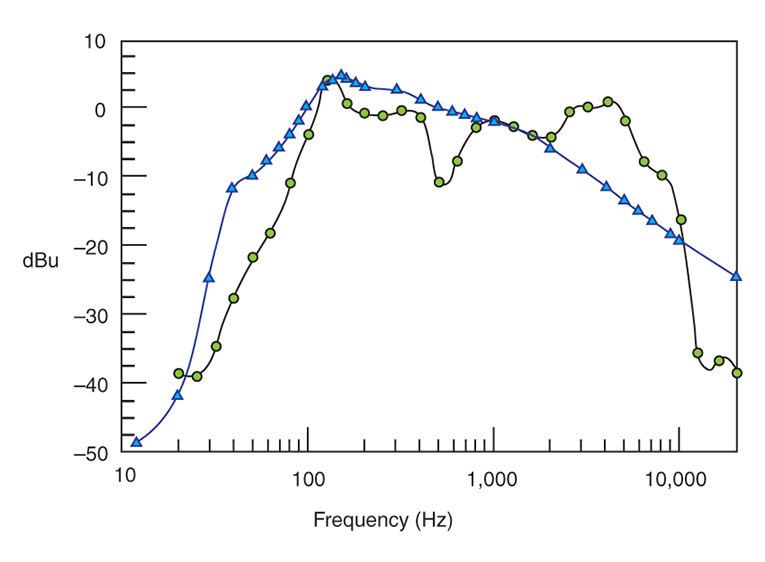
I used True Audio’s TrueRTA Quick Sweep Version 4.0 spectrum analysis software and pink noise to conduct a listening test and make an outdoor measurement. (Quick Sweep is not gated, which means the measurement time is longer than the signal duration. So try to minimize sound reflections into the measurement microphone.)
I used a speaker cable and a microphone cable that run through the wall outside my computer room to measure the loudspeaker performance. I placed the test speaker on a wooden platform about 4’ off the ground. I mounted the measurement microphone on a plastic tripod, which I could place up to 30’ from the speaker. The graveled ground scattered the noise and minimized direct sound reflections. The microphone was one of a group of three Behringer ECM8000 electret condenser microphones or one of a group of three Dayton Audio EMM-6 electret condenser microphones. With groups of three, you can self-calibrate by comparing microphone pairs. (I used a Tenma 72-7260 sound-level calibrator to achieve absolute calibration at 1,000 Hz.) I used TDL Technology’s Model 411 measurement microphone amplifier as a microphone preamplifier.
My test determined that the reviewers were right about the MTX 5i’s weakness in the midrange frequencies (see Figure 1). I wasn’t content to just examine the overall frequency response, so I decided to dig deeper.
Testing the Original
I disassembled one of the units and removed the 5.25″ woofer, which I suspended in free air. I used Dayton Audio’s WT3 woofer tester (which was recently replaced by the Dayton Audio Test System) to measure its Thiele-Small values with Dayton Audio’s WT3. I measured Vas with the added-mass method.
I measured the box dimensions and then used Harris Technologies’s BassBox 6 Pro simulation software to model it as an unfilled, vented enclosure. I also measured just the woofer in the vented box. Figure 2 shows the simulated and measured responses. Except for the peak at about 150 Hz, the curves are not very similar, but I think the measured response is more reliable. The 150-Hz peak and the 500-Hz dip are at least partially responsible for the weak midrange (more about that later).
The simulation indicated that this woofer was equally suited for both a vented or sealed box. I removed the vent in the simulation and produced the curves shown in Figure 3. The sealed-box curve is for heavy acoustical fill because this provided the lowest closed box Q measurement (0.887), indicating that this box is a bit too small. A larger sealed box would have a Q closer to the 0.707 maximum flat value. But, as expected, the sealed box response is flatter at the expense of a higher rolloff frequency.
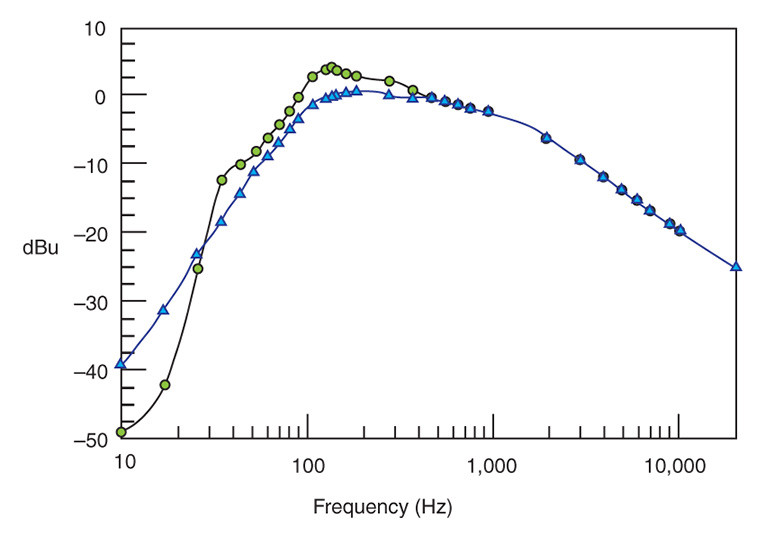
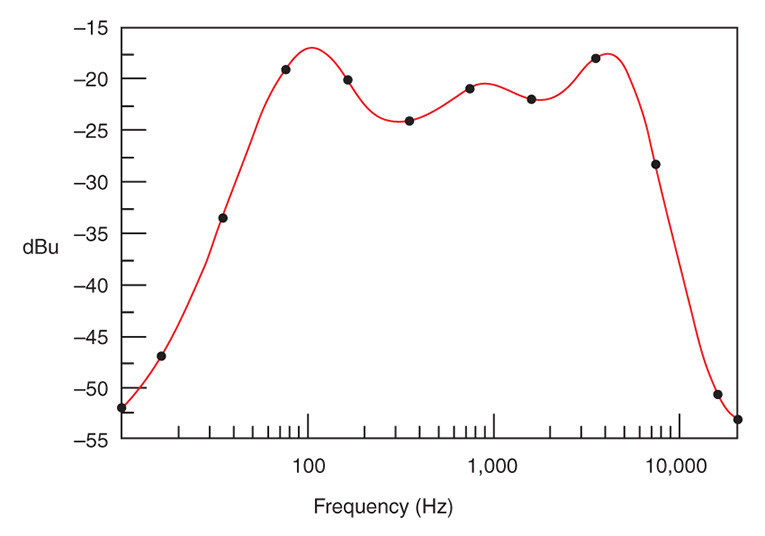
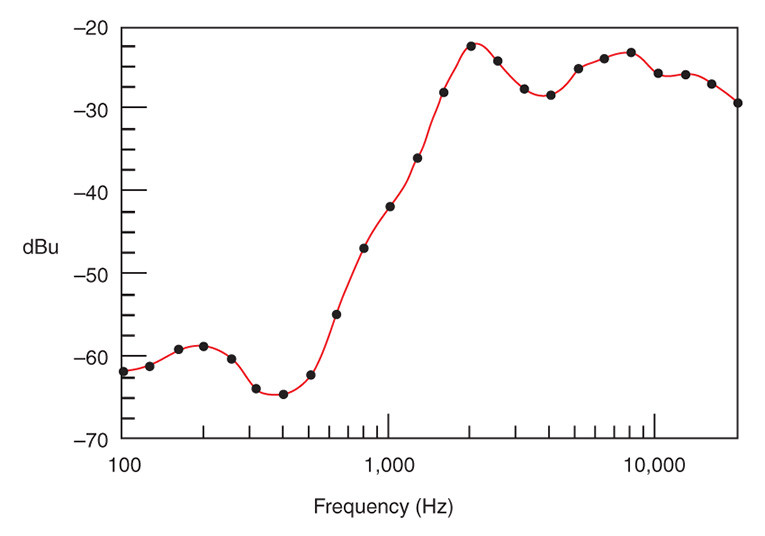
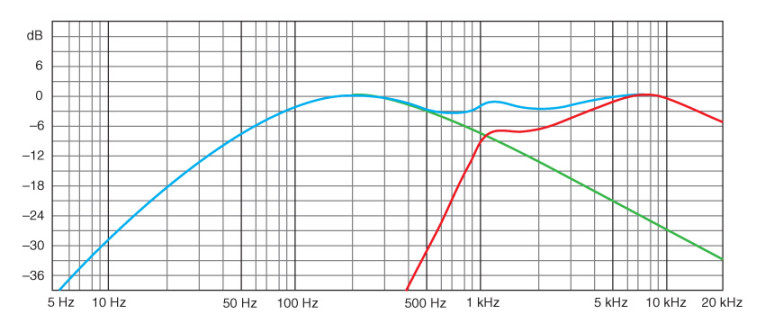
I sealed the box and measured the response to determine if the dip would still be there. The vent tube was lightly glued into the box front and is easily popped out with a broad, wood chisel. I glued a piece of 0.125″-thick pressed board over the vent opening and used a hobby knife to remove the thin vinyl box covering under the “patch,” so the glue would adhere to the medium-density fiber board (MDF). Figure 4 shows a frequency response measurement. The dip is still there.
The tweeter is a 12-mm balanced dome with specifications unknown to me. The crossover is a 3.9-μF capacitor in series with the tweeter’s inductance and DC resistance. So this is a first-order network with a 6 dB per octave rolloff and a calculated 10-kHz corner frequency. I removed the capacitor and measured the response (see Figure 5). It was not especially flat, and this — along with the first-order crossover network and the absence of a reasonably flat woofer — convinced me to update the drivers. I wanted to keep the boxes because of their size and appearance.
Driver Update
For my first task, I needed to choose a new pair of fairly well-matched drivers. So, I turned to the Parts Express catalog to see what I could find. I chose Dayton Audio’s DC130A-8, a 5.25″ woofer, which is a “drop-in” replacement for the original, and Dayton Audio’s ND28F-6 neodymium dome tweeter. The tweeter is a 1.125″ unit and is not a direct replacement, but it is close and it is easy to drill new mounting holes. The original’s mounting-hole circle diameter is 59 mm, while the replacement’s mounting hole is 56 mm. I turned the new tweeter 90° and connected it to a portion of the MDF that did not already have holes.
The Dayton datasheets provided the T-S values for both drivers, so I used the Xover Pro passive network design program to simulate the design in BassBox. A 2,200-Hz, second-order Linkwitz-Riley network provided a nice overall response (see Figure 6). Figure 7 shows the crossover circuit. Component values are calculated for an 8-Ω woofer and 6-Ω tweeter. C1 is an Audyn Cap Q4 series 2.7-μF 400-V crossover capacitor in parallel with an Audyn Cap Q4 series 3.3-μF 400-V crossover capacitor, 5% value tolerance (Parts Express part numbers 027-111 and 027-112, respectively, or their equivalents). C2 is an Audyn Cap Q4 series 4.7-μF 400-V crossover capacitor, 5% (Parts Express part number 027-114 or equivalent). L1 is a Jantzen Audio 0.85-mH air core inductor, 3% (Parts Express 255-244 or equivalent). L2 is a Jantzen Audio 1.2-mH air core inductor, 3% (Parts Express 255-254 or equivalent).
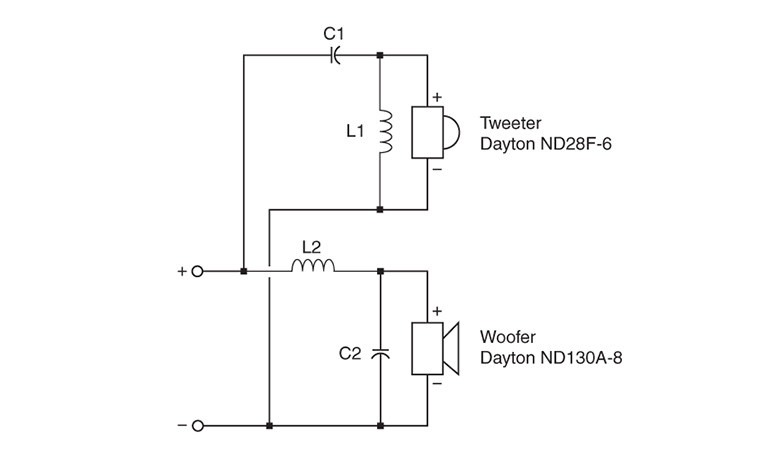
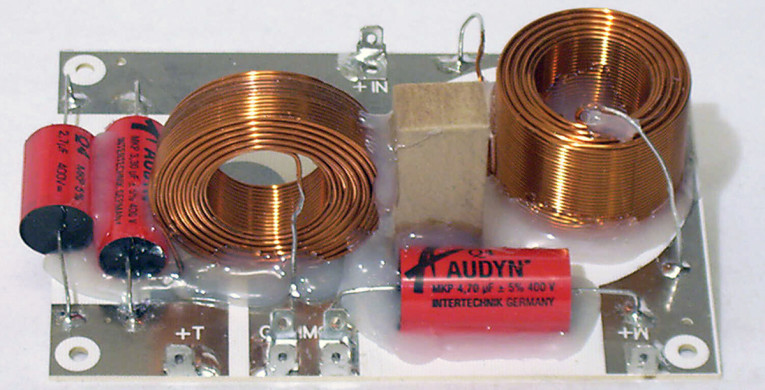
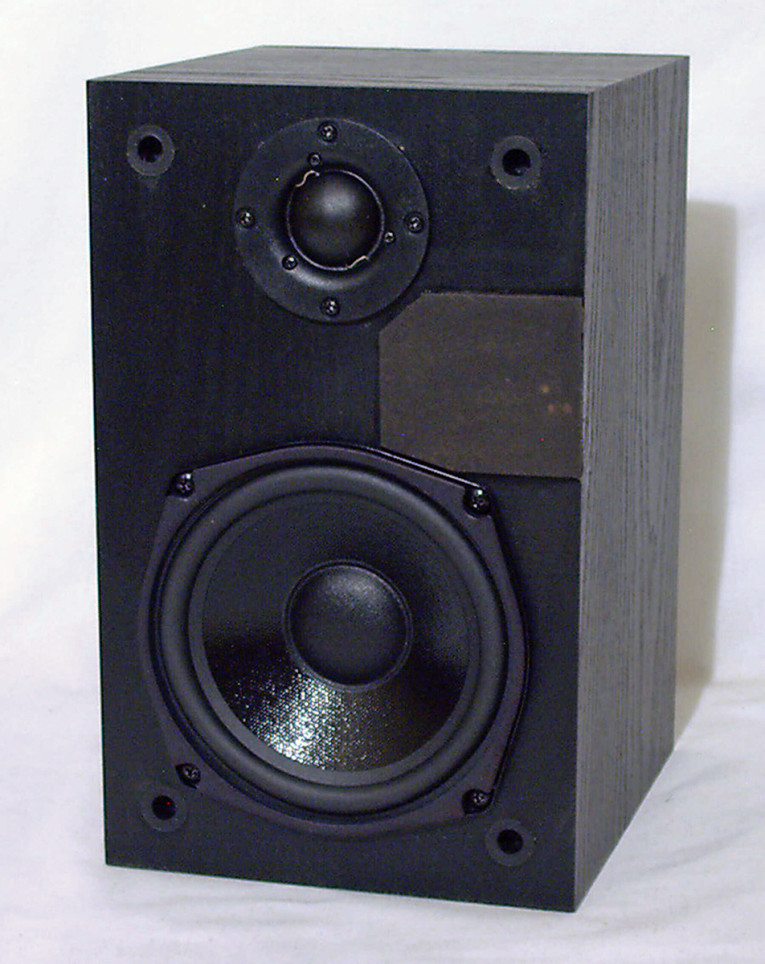
The Construction
I sealed the vent port on the second box and stained both patches ebony black to match the vinyl covering. I built the crossover on a Parts Express model 260-130 crossover two-way PC board. Photo 2 shows a completed network, which measured 3.75″ × 5.5″. The liberal use of hot glue is suggested as is the “brace” for the vertically mounted inductor. It’s a short length of 0.5″ × 0.75″ MDF, and I included it because I mounted the network board on the inside back of the box using four #6 × 5/16″ sheet metal screws. With both drivers out of the box, there really is enough room to do this!
Photo 3 shows the completed rebuild and Figure 8 shows the measured outdoor response. The rebuilt speakers have a flatter response than the original unaltered MTX 5i, but the proof is in the listening.

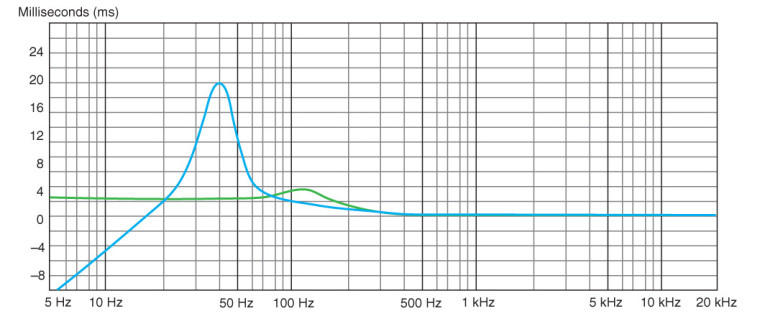
Listening Test
I compared the rebuilt speakers with my pair of Tom Simmons Memorial Design Number 2 line-array speakers (see Photo 4). Each of these speakers has nine 3″ Tang Band drivers in a 40.5″ tall sealed enclosure. The frequency response is ±4 dB from 100 Hz to 20 kHz. I didn’t use a subwoofer because I thought it would distort the test.
I listened to three CDs presenting a variety of musical styles. I used these music sources for the listening tests: Diana Krall, The Girl in the Other Room, Verve Music Group Super Audio CD (SACD), 2004; Mozart Clarinet Concerto K622, Michelangelo Chamber Orchestra, Music Fidelity SACD, number MFSACD017, 2004; and Bill Evans Trio, Waltz for Debby, HDTracks.com download, DVD-Audio.
When I first started listening, the MTX 5i speakers sounded terrible, with lots of hangover on transients. But this disappeared when the speakers started to break in 30 min later. After a couple of hours, they sounded good. They were bright but well balanced with a nice transient response. I thought the drum-kit sounds, in particular, were more live than the line arrays. Perhaps the dome tweeter has a better high-frequency response than the array. I don’t have data on either one above 20 kHz. The line arrays, of course, had a much bigger sound stage and were perhaps more “mellow” by comparison. But both speaker sets were equally pleasant.
The comparison equipment started with a Pioneer DV-563A DVD player’s output into one stereo channel of a TDL Model 457 Audio Control Center. One 457 stereo output channel drove an Ed Simon Class A power amplifier and the line arrays. Ed Simon’s describes his original design for the Class A Ed Simon power amplifier in his article “A Solid-State Single-Ended Power Amp” (audioXpress, April 2006). I built this amp twice: First as described and then as a rack-mount version.
A second TDL 457 output channel drove a Ferretti power amplifier and the MTX 5i speakers. (Marco Ferretti described his power amplifier in his audioXpress article, “A Modular Hybrid Amp System,” February 2001.) This hybrid uses a vacuum tube input and a solid-state output for the best of both worlds.
I used the TDL 457 channel selection to easily switch between speaker pairs. The TDL 457 also has individual channel volume controls, so I could set up the speakers for equal loudness. I swapped the power amplifiers part way through the test without any change in my impression of the rebuilt MTX 5i speakers. The listening room is 17’ × 28’, and I listened from 21’ back midway between the left and right speakers.
Figure 9 shows the original and updated MTX 5i speakers’ group delay comparison. It is generally thought that a flatter time delay has less distortion. This is another trade-off that a vented enclosure makes for its extended base response.

Final Thoughts
Was this rebuild worth it? Yes, I think so. But it depends on your interests and capabilities. For example, it would have cost me less to build the sealed enclosures than it did to buy the original speakers. But, I have a rather complete workshop and have built several speaker systems. If you don’t have a woodshop or the building experience, then I think you will get a much superior set of speakers by doing the update. aX
Resources
M. Ferretti, “A Modular Hybrid Amp System,” audioXpress, February 2001.
R. Tipton, “A Solid-State Single-Ended Power Amp,” audioXpress, April 2006.
Sources
EMM-6 Electret condenser microphone, DC130A-8 woofer, and ND28F-6 neodymium dome speaker
Dayton Audio | www.daytonaudio.com
BassBox 6 Pro loundspeaker simulation software
Harris Technologies, Inc. | www.ht-audio.com
Tenma 72-7260 Sound level calibrator
MCM Electronics | www.mcmelectronics.com
260-130 Crossover two-way PC board and Jantzen Audio 0.85-mH and 1.2-mH air core inductors
Parts Express | www.parts-express.com
TrueRTA audio spectrum analyzer software
True Audio | www.trueaudio.com


